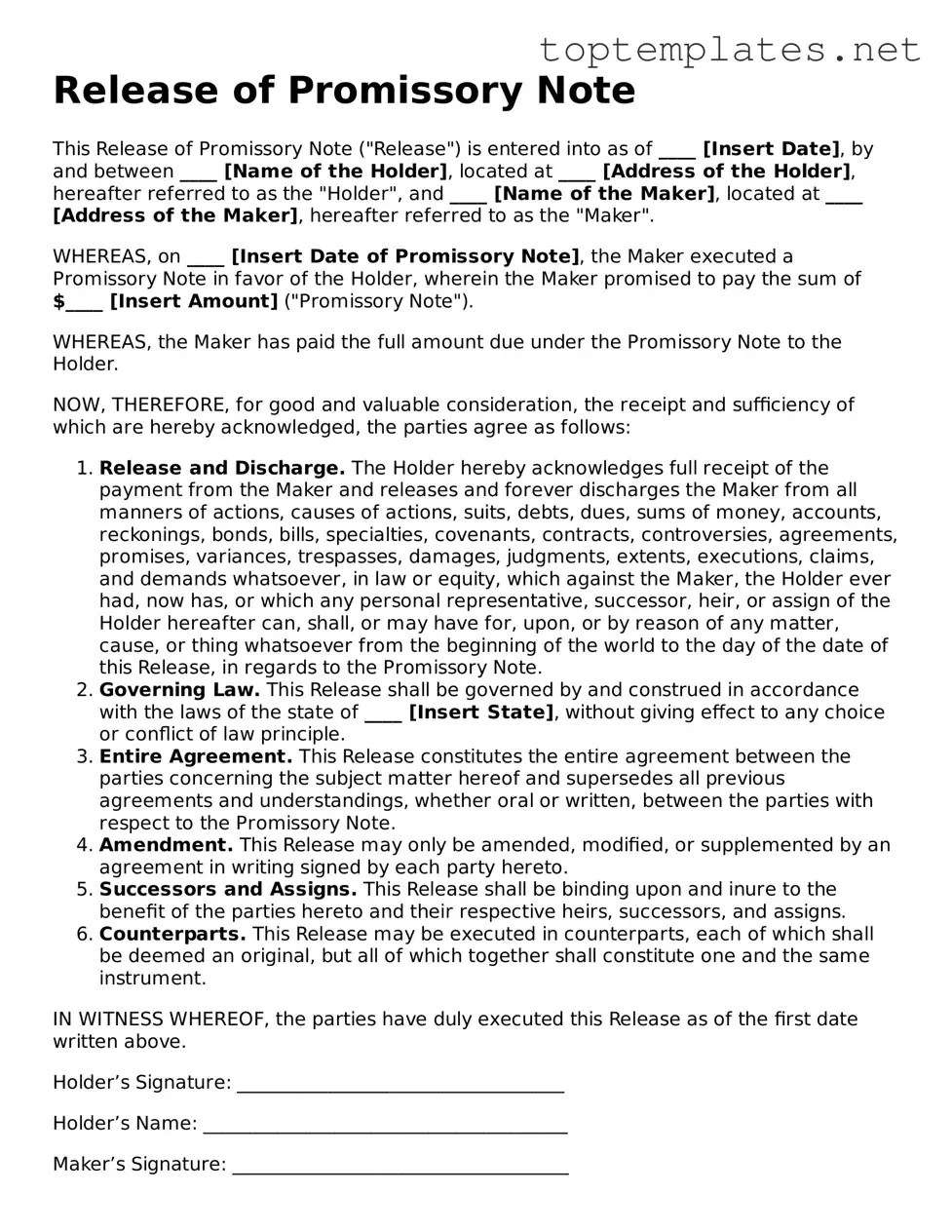What is a Release of Promissory Note form?
A Release of Promissory Note form is a legal document indicating that a borrower has fulfilled the terms of a promissory note. This document is evidence that the debt specified in the promissory note has been paid in full, releasing the borrower from any further obligation to the lender.
When should a Release of Promissory Note form be used?
This form should be used as soon as the borrower has finished paying off the debt under the terms of the promissory note. It serves as an official receipt and closing of the financial agreement between the lender and the borrower, protecting both parties from future disputes over the debt.
Who prepares the Release of Promissory Note form?
Typically, the lender or an authorized agent of the lender prepares the Release of Promissory Note form. However, the borrower can also prepare the document for the lender's signature to ensure the release is officially documented.
Is the Release of Promissory Note form legally binding?
Yes, when duly signed by the lender (and notarized, depending on state requirements), the Release of Promissory Note form becomes a legally binding document. It officially terminates the obligations of the borrower under the promissory note, thereby preventing the lender from making any future claims regarding that debt.
Do both parties need to sign the Release of Promissory Note form?
Typically, only the lender needs to sign the Release of Promissory Note form to confirm that the debt has been paid in full. However, the borrower may also sign the document, especially in cases where a mutual release is desired, acknowledging that both parties have fulfilled their obligations under the original agreement.
What happens if I don't get a Release of Promissory Note?
Without a Release of Promissory Note, the borrower may face challenges in proving that the debt has been fulfilled, which could lead to potential legal disputes. The absence of this document leaves room for the lender to mistakenly or fraudulently claim that the debt is outstanding, posing risks to the borrower's financial status and creditworthiness.
Is a notary required for a Release of Promissory Note?
The requirement for notarization varies by state. While not always necessary, having the Release of Promissory Note notarized adds an extra layer of legal protection, authenticating the identity of the signer and potentially deterring fraud. It's advisable to check local laws or consult with a legal expert to determine if notarization is needed in your case.
How should a completed Release of Promissory Note form be stored?
Both the borrower and the lender should retain copies of the completed Release of Promissory Note form. It is recommended to keep it alongside the original promissory note and any other relevant financial documents, in a secure location where it is protected from damage or loss. Digital copies can also be stored securely online for easy accessibility and added security.
